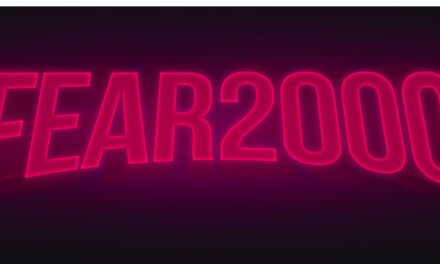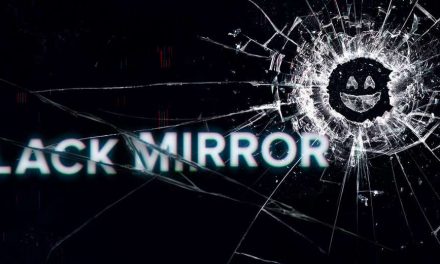Guest editors: Giulia Taurino (Northeastern University), Georgia Aitaki (Karlstad University)
Given recent technological advancements, media scholars have been discussing a digital, computational, algorithmic turn in television (Berry, 2011; Hansen & Paul, 2017; Housley et al., 2022), pointing at the rising network of infrastructures, content-host and delivery platforms and other forms of techno-cultural adaptation that influence television production, distribution, and reception. The implications of streaming television and its reliance on algorithms have been explored in relation to its economy, geography, regulatory practices, social uses, and power relations (Evens & Donders, 2018; Lobato, 2019; Lotz, 2022; Chalaby, 2023). In these academic studies, particular attention is given to the scale of audiovisual transmission, as well as the unprecedented increase of television content, with streaming companies able to service several countries and regions all over the world, and store hundreds or thousands of titles at the same time, ready to show on demand. Considering the overall archival tendency of contemporary media ecologies, we propose to investigate algorithmic television first and foremost as an attempt to archive television, a medium that for the historical fragility of early formats and constant exposure to technological transitions has faced an uneven evolution in what concerns practices of record-keeping.
In this issue, we would like to bring scholarly attention to the primary role of streaming platforms as content repositories, virtual places for storing, structuring, and accessing television content via complex library systems designed to organize, filter, and retrieve audiovisual records, making them available for simultaneous distribution. As television archives address similar issues of cataloging and sorting large collections, we are presented with an interesting scenario. Due to a lack of well-established curatorial protocols for the management of audiovisual material, television had to overcome data storage challenges since its early years, sometimes leading to non-archival practices, such as overwriting or unrecorded live-reporting. Over the years, media corporations adopted somewhat dis-homogeneous, temporary solutions for content archival and classification while searching for more sustainable options. By the time non-commercial television archives were created, the content acquired was likely to be either unlabeled, mislabeled, incomplete, disorganized or following “non-standardized” labeling systems. More recently, the need of streaming platforms to prioritize content classification for their economic sustainability made a consistent contribution to tackling the issue of cataloging televisual records – namely, by investing in the creation of queryable databases, scalable media metadata systems and in the development, and implementation of algorithms for content indexing. Relying on computationally demanding systems, streaming services were able to develop semi-automated solutions for information filtering and retrieval that might offer a response to the longtime challenge of archiving audiovisual content.
In the time of algorithmic media, where algorithmic television (Shapiro, 2020) counts as an archive in its own right, particular attention is given to filtering and recommendation systems and the ways they dictate our access to television production. With this issue, we hope to gain further insight in the relation between algorithmic curation and archive-based curatorial practices, accounting for the intersection between coding, programming, and editorial practices, infrastructural and operational logics, commercial aspects, copyright licensing, and acquisition regulations that affect the ways television is received. We invite proposals dealing with the interaction between emerging algorithmic technologies and more traditional archival work – whether maintained by media corporations for internal profit or by non-profit, academic, cultural institutions for heritage preservation purposes –, with a focus on forms of curatorship adopted in television archives across Europe. We are particularly interested in exploring how audiovisual archival practices, infrastructures, and geographies of storage have been redefined by the introduction of algorithmic-based methods for content classification and data management, and how streaming platforms have, in turn, integrated former archival approaches. Potential contributions might encompass, but are not limited to, the following questions:
- How did archival science transition to streaming libraries in algorithmic television?
- How did early European television broadcasting tackle the storing and ordering of content outside of the programming schedule?
- How are present-day recommender systems influencing the way media archives curate audiovisual records?
- How can we understand the spatial logics of archive television practices from a historical perspective, considering the transition from analog to digital records in archival settings?
- What is the role of the organizational, infrastructure, and subscriber geographies in storing, structuring, and accessing content in the era of algorithmic media?
- What are the possibilities emerging and the challenges posed by algorithmic curation from the practitioners’ point of view?
- Which future developments do we envisage in the practice of building and preserving television collections?
The goal of this issue is to cover the pre-history, current evolutions, and future consequences of classification, selection, and recommendation practices in algorithmic television, drawing a connection with pre-existing archival practices and other ways of sorting audiovisual records that influence the socio-cultural understanding of televisual media and content.
Submission details
We invite submissions from broadcast historians, media/television studies scholars, audiovisual archivists and television professionals, as well as researchers in the field of computer science and information systems.
Proposals (max. 500 words) should be submitted by email to journal@euscreen.eu by July 31, 2023. Article proposals can (optionally) mention if they will take the form of a “discovery” (audiovisual-driven case study) or “exploration” (more traditional academic approach; for further info see https://viewjournal.eu/about/). Authors are encouraged to send in a short biography with their proposal.
A notice of acceptance of abstracts will be sent to authors in September 2023.
Articles (between 3,000 – 6,000 words) will be due on December 29, 2023. Longer articles are welcome, provided that they comply with the journal’s author guidelines (https://viewjournal.eu/about/submissions/).
All articles will be peer-reviewed. The issue will be published in November/December 2024.
Questions about the issue can be directed to: g.taurino@northeastern.edu





